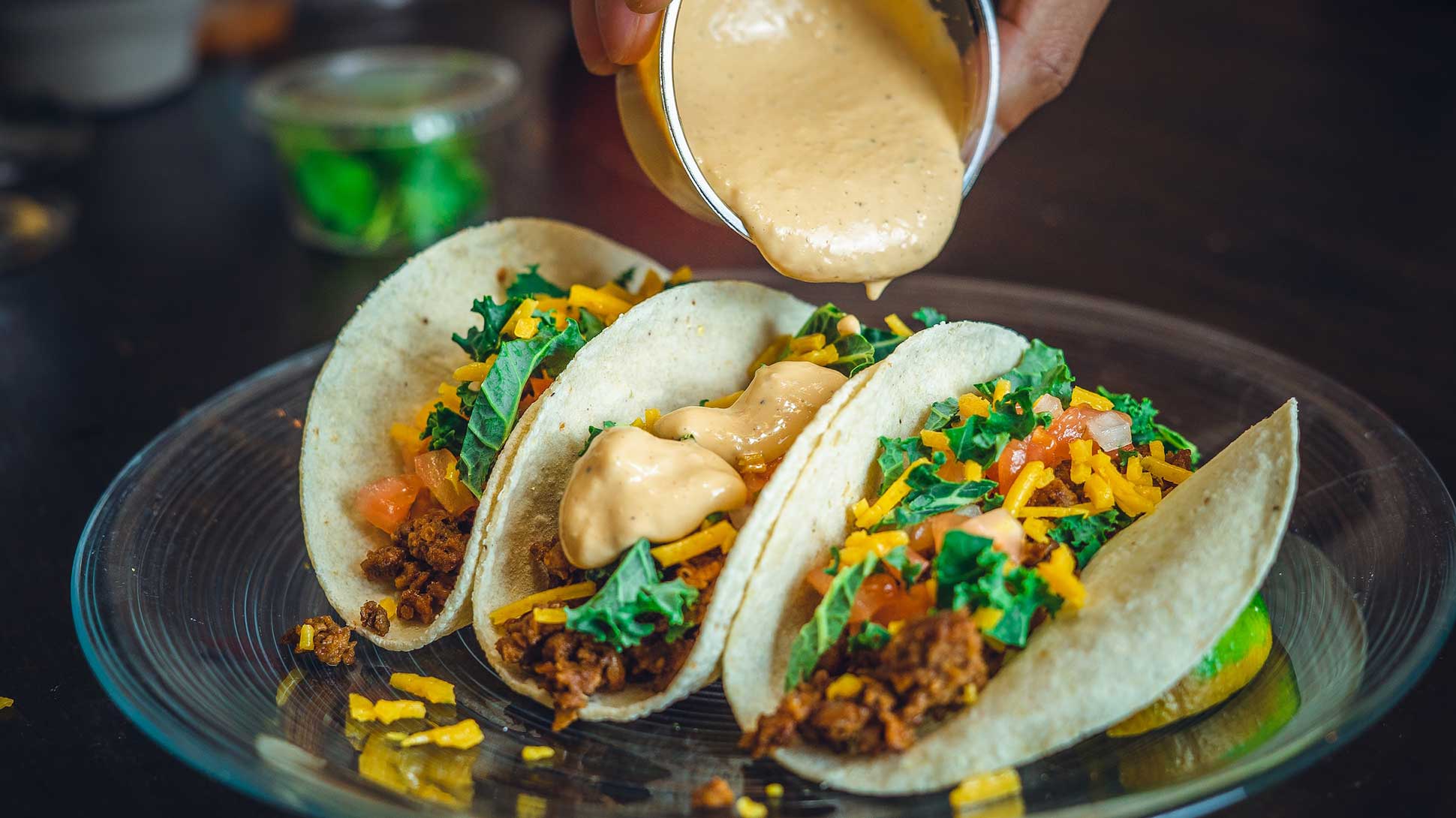In modern times, the dynamism of work and life, along with technological innovations and globalization, have brought us closer to new tastes, food, traditions, and customs from the most distant parts of the world.
That is why it is no wonder that gourmets, out of love for local cuisines, gladly fly to Asia, Africa, and South America to experience the authenticity of previously unknown tastes and ways of preparing food. In addition to Italian and Chinese cuisine, an inevitable stop on those trips would be - traditional Mexican cuisine because, as they say, it is a paradise for gourmets!
Actress Michelle Pfeiffer once said: "I'm not a person who likes dessert. I'm more of a crunchy, salty woman. I could live on chips and salsa. I would rather eat Mexican food than some fancy French cuisine every time!"
Basic elements of Mexican cuisine
To understand why traditional Mexican cuisine is widely spread and represented in all parts of the world, we will look back not only at the main foods and spices that make them enchanting and unforgettable but also at the culture, climate, and society that makes it so specific that even Hollywood stars cannot resist their bite.
Located in Central America, under the influence of Indian tribes and Spanish conquerors who had a huge impact on the culture of this climate; they also left a huge mark on the formation of culinary habits, tastes, and the addition of specific spicy elements. The main ingredient in Mexican dishes is corn and its products, and various legumes and beans are not far behind. At the same time, chili peppers give a special, specific taste.
They would enrich the meal with local vegetables such as tomatoes, cauliflower, spinach, zucchini, Swiss chard, potatoes, mushrooms, coconut, vanilla, and edible flowers and spices that are not used in other cuisines. The table will also include avocados edible with skin, cactus, huazantola (a type of broccoli), and other fruits characteristic of this Latin American climate.
European Influences
The Spanish conquistadors made their European contribution to traditional Mexican cuisine, including greater amounts of different meats - chicken, pork, beef, and various types of cheese, spices, and certain fruits. Guava, mango, banana, pineapple, and other tropical fruits are popular ingredients in these dishes.
Despite the European influences, the original Mexican food is not greasy and always had that fruity malt! Even in ancient times, it was thermally processed in large clay or metal vessels without adding vegetable oil or animal fat. Traditionally, dishes were baked in wrapped banana, avocado, or corn leaves.
Today, this way of preparing food is considered a great skill and, therefore, a luxury, so it can only be tasted in high-class restaurants and some countries of the world.
Hot, hot - the hottest!
Of course, when we think of Mexican food, our tongues can't help but burn. This is what traditional Mexican cuisine is known for - the hot taste of chili peppers. Although all the dishes of this traditional cuisine do not contain chili but sweet pepper or dried tomatoes, you may come across this hot pepper in some "ordinary" dishes.
Chili peppers are indigenous to Mexico, and their use dates back thousands of years. They are also used for taste, not just for spiciness. Even today, most Mexicans believe that their national identity would be lost if it weren't for chili peppers. Also, salsa, as well as other types of sauces characteristic of this climate, would not be possible to make without this red, strong spice. If a salty dish or snack does not contain chili pepper, it is usually served with a hot sauce. It is not unusual that chili peppers are often added to fresh fruit and sweets.
Cacao is also originally from Mexico. Since ancient times, as it is today, it has been a faithful element in cooking, especially in making sweets and cakes. Before the influence of Euro-culture, it was originally consumed as a warm drink, as a syrup prepared with honey, so it was also considered medicinal.
Traditional Mexican cuisine through time
Traditional Mexican cuisine has undergone various changes over time. Fast Mexican food that we encounter today is one of the products of the evolution of traditional Mexican cuisine. Chimichangas, which you will hardly find on a restaurant menu in Mexico itself, and the traditional Mexican nacho, more precisely a tortilla preparation topped with melted cheese and sour cream, can be eaten today at a nearby Mexican fast food restaurant anywhere in the world.
A Mexican delicacy is certainly the consumption of insects or entomophagy, which is becoming increasingly popular beyond poor and rural areas due to its unique taste, sustainability, and connection to pre-Hispanic heritage. Popular species include grasshoppers or crickets, ant larvae, stink bugs, and water bug eggs. You can still find skewers of various types of insects on the streets of Mexico today.
Nothing without the corn!
Despite the introduction of wheat and rice into the diet, corn is a staple food as a cereal. Although it is eaten fresh, most corn is dried and ground into a masa dough. This dough is used fresh or fermented to make a wide variety of dishes - from drinks (atole, pozole, etc.) to tamales, sopes, and much more, as a base for main dishes and in the preparation of tortillas - the most famous dish when it comes to traditional Mexican cuisine.
Tortillas are made from corn in most of the country. Still, other regional versions, such as wheat tortillas in the north or plantain and yucca, are also made from corn flour, cactus, and wild vegetables in Oaxaca.
The common bean is a historical component of the Mexican diet. Beans and corn lack various essential amino acids but complement each other when eaten in combination, providing a complete source of protein.
Quesadilla, nachos, burritos, tacos, ensiladas are the most famous dishes with tortillas. In Mexico, tacos are not eaten as a main meal but mostly before noon or late at night. You can wrap any other food, meat, vegetables, fruit, toppings, and foods in a tortilla with plenty of spices and sauce to make it tasty, juicy, and delicious.
Many Mexican dishes are defined by their highly spicy sauces and the chilies that those sauces contain, rather than the meat or vegetables that the sauce covers. Dishes without sauce are rarely eaten without salsa or fresh or pickled chilies. This includes street food.
We will spice up this gourmet journey with two recipes to bring at least a small part of traditional Mexican cuisine to your table.
Tortillas
Given that traditional Mexican tortillas are made from specially processed and dried corn flour, we will, for this occasion, make them with soft wheat flour.
Required ingredients:
- 250g of soft flour
- ½ teaspoon of salt
- 175ml of water
- 3 tablespoons of olive oil
Method of preparation:
- Mix flour and salt and gradually add water and oil.
- Knead the dough on a floured surface and let it rest for ten minutes.
- Divide the total mixture into eight parts. Roll out each part into a thin dough - to get the shape of a tortilla.
- Bake them at a medium temperature for a minute on each side in a large, lightly greased pan - until the dough is slightly browned.
- Serve them with filling or sauce of your choice
Guacamole
Guacamole is an unsurpassed Mexican avocado sauce with a creamy taste, which exudes the climate from which it comes. It is easy and quick to make; in 15 minutes, you have a ready meal with hot tortillas.
Required ingredients:
- 2 avocados, ripe
- 1 chili pepper
- 1 red onion, small head
- 2 bunches of tomatoes
- cilantro
- clove of garlic
- juice of one lime
- pinch of sea salt
Method of preparation:
- Cut the avocado in half, remove the stone, remove the flesh from the skin with a spoon and then mash it with a fork; add salt, lime juice, and chopped chili pepper and mix it all.
- Add finely chopped red onion, garlic, tomato, and, finally, coriander to the mixture (if you can't find it, you can also add parsley) and a little olive oil.
- Mix it all and season it according to your preference. Be sure to put cling film over the bowl if you don't serve the guacamole right away, to keep the nice green color because the avocado oxidizes quickly.
Bon appetite!



